
Bonfire at Omizu Okuri festival in Obama, Fukui Prefecture. Photo by Nevin Thompson
For one night each year for at least the past 1,250 years, crowds gather at a lonely temple in the hills above Obama, a small fishing and farming town on the Japan Sea, to prepare for the arrival of spring with fire and water. Jinguji, a temple in Obama, is home to the Omizu Okuri (“the sending of the water”), when sacred water is sent from Obama to the ancient imperial capital of Nara, 90 kilometers to the south.
This year the festival in Obama occurs on March 2, and it's supposed to take ten days for the water to somehow wind its way to Nara. The ceremony blends Buddhist and Shinto rituals, as well as that of Shugendo, an ancient form of mountain worship long practiced in the hills around Obama. The festival features a lot of fire, and makes for stunning photographs:
Japan's imperial capital was located in Nara for most of the eighth century. The city was Japan's center of government and religion, and many satellite temples were established in Japan's provinces. Jinguji in Obama marks the site of one of these temples, and has been “sending” water to Nara's great Todaiji Temple each March for more than a millennium. According to Wikipedia:
The water [at Jinguji, in Obama] is actually drawn into two pots, one pot containing water from the previous year, and another that contains the water from all previous ceremonies. From the pot of water that holds the water of the current year, a very small amount of the water is poured into the pot which holds the mixture of water from all of the previous ceremonies. The resulting water mixture is preserved each year, and this process has taken place for over 1,200 years.
As part of the ceremony, a bonfire is lit on the grounds of Jinguji in Obama, before a procession bearing torches and the water itself marches up into the hills and towards the headwaters of the Onyu River, where the Omizu Okuri ceremony will be completed by pouring the water into the stream.
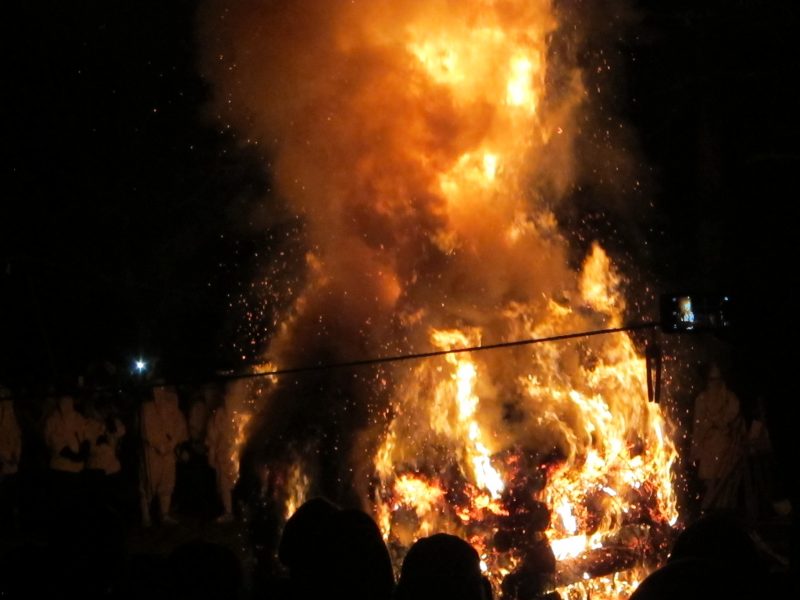
Omizu Okuri festival in Obama, Fukui Prefecture. Photo by Nevin Thompson
Generally speaking, the fire is intended to purify the water and the festival participants, in order to help make a clean start at the start of spring.
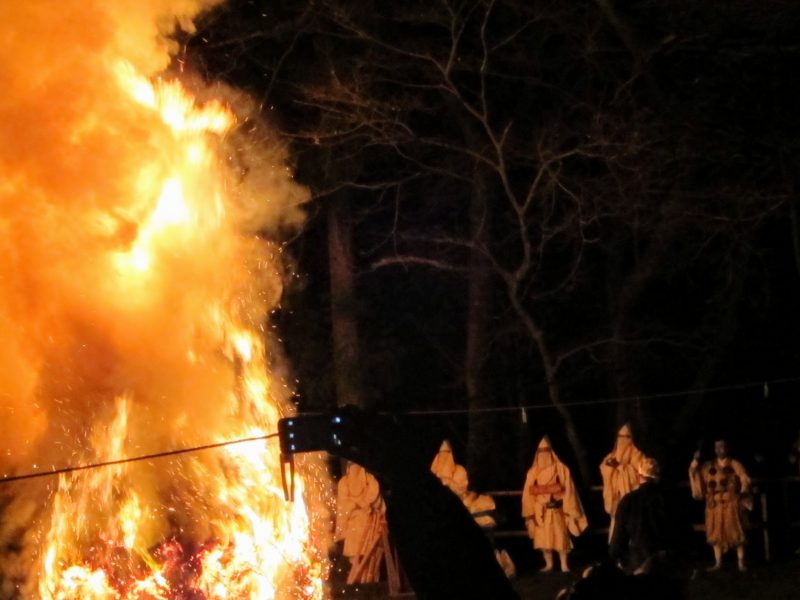
Omizu Okuri festival in Obama, Fukui Prefecture. Photo by Nevin Thompson
As a result, the festival in the hills above Obama attracts hundreds of people each year.

Omizu Okuri festival in Obama, Fukui Prefecture. Photo by Nevin Thompson
Many of the participants in the ceremony are local villagers from neighborhoods around Obama, and are dressed in traditional white garments common to Shugendo practitioners.
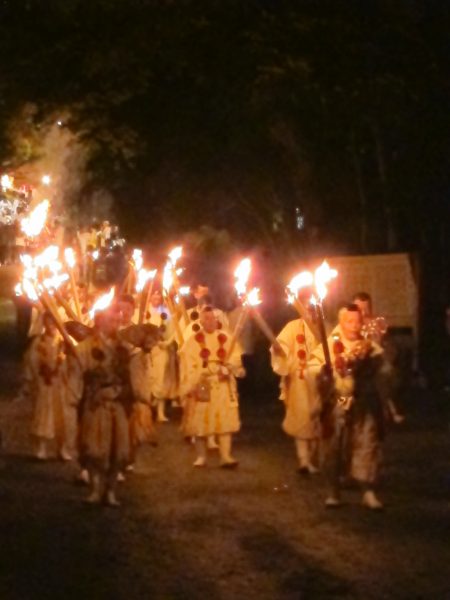
Omizu Okuri festival in Obama, Fukui Prefecture. Photo by Nevin Thompson
The participants in the procession to the headwaters of the Onyu River must wear masks and cowls to protect themselves from the shooting sparks of the massive torches.
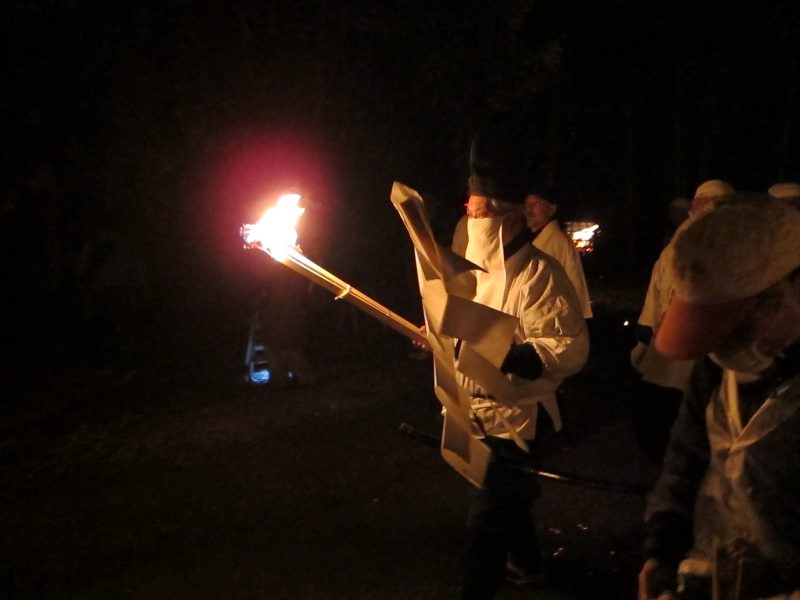
Omizu Okuri festival in Obama, Fukui Prefecture. Photo by Nevin Thompson
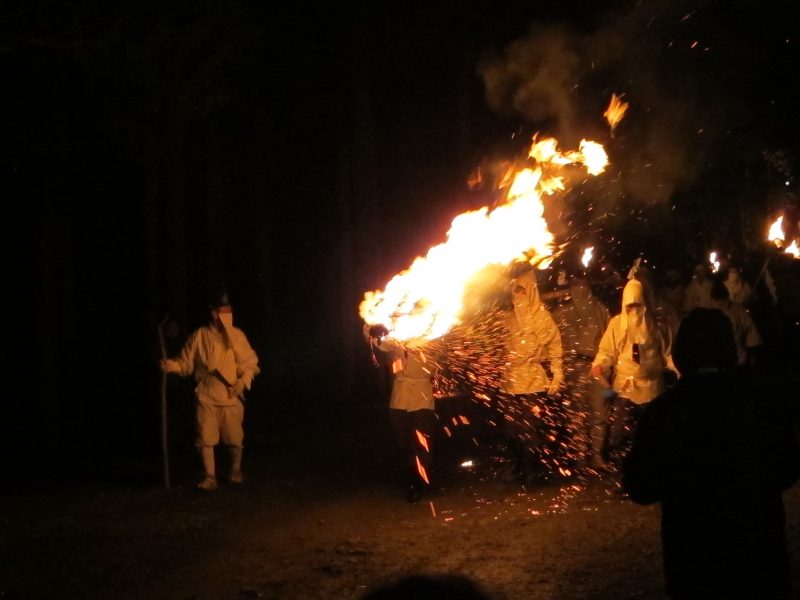
Omizu Okuri festival in Obama, Fukui Prefecture. Photo by Nevin Thompson
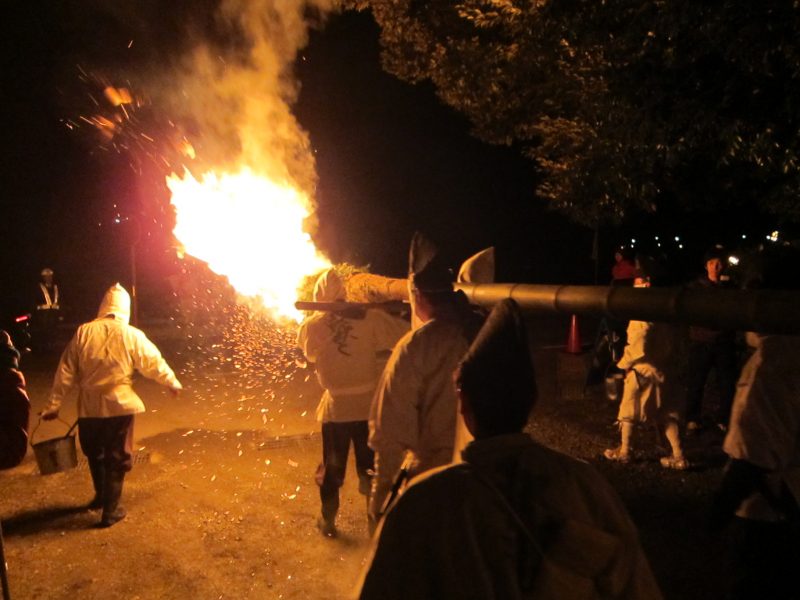
Omizu Okuri festival in Obama, Fukui Prefecture. Photo by Nevin Thompson
It's debatable whether the water will actually travel from Obama to Nara. There are several mountain ranges in the way, as well as Japan's largest lake, Lake Biwa. The Omizu Okuri festival is meant to be more of a symbolic celebration of the start of spring.






